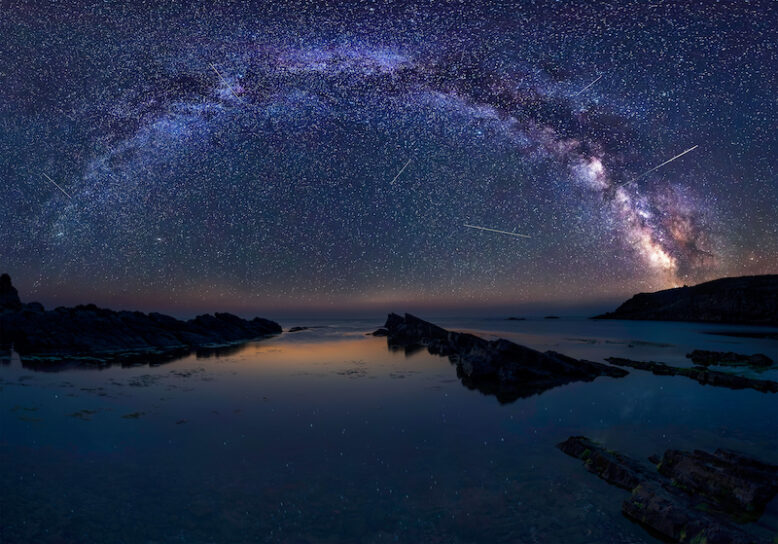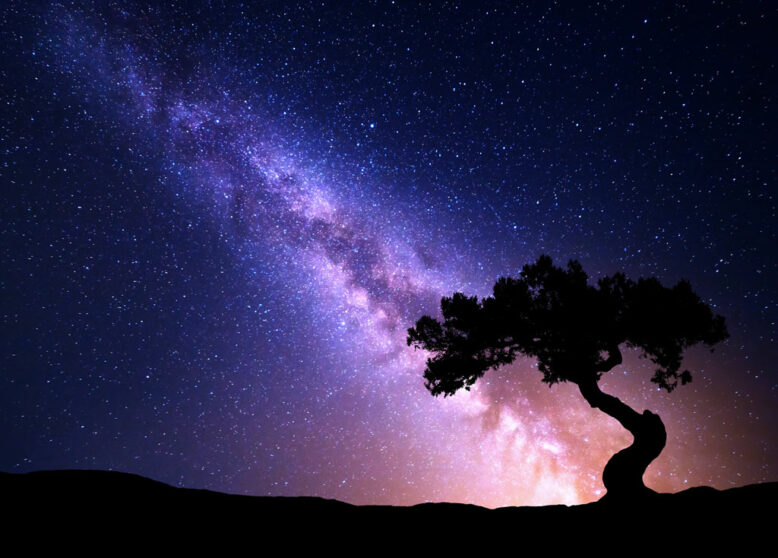The Milky Way, or Via Lattea as it is known in Italian, is the spiral galaxy (galassia) that we call home. An estimated diameter of 100,000 light years (anni luce), it contains the Sun (Sole) and the Solar System (Sistema Solare) in addition to at least 100 billion other stars (stelle), planets (pianeti), clusters (ammassi), nebulae (nebulose) and black holes (buchi neri).
Via Lattea
Milky Way

Via Lattea is composed of two words:
via
a feminine noun (plural: vie) that has multiple meanings including street, way, road, path, route, passage
latteo
an adjective meaning ‘from milk’ or ‘like milk’; it becomes lattea after feminine nouns to signify milky, dairy
The name Via Lattea can be attributed to the appearance of the galaxy as seen from Earth, a diffuse milky band of white light arching the night sky. It derives from the Latin via lactĕa which in turn comes from the Greek galaksías kýklos which means ‘milky circle’.
Cerco una guida su come fotografare la Via Lattea. Hai qualche consiglio?
I am looking for a guide on how to photograph the Milky Way. Do you have any advice?

According to Greek mythology, the Via Lattea was created when Zeus allowed the infant Heracles to suckle on his divine wife Hera’s milk (latte) while she was asleep, an act that would endow him with god-like qualities. When Hera awoke, she pushed away the unknown infant, causing the milk to spurt across the night sky.
Did you know that…?
If you shrunk the Milky Way down to the size of the United States of America, the Solar System would be no bigger than the size of a US quarter!
Non conosciamo il numero esatto, ma sappiamo che nella Via Lattea ci sono più di 100 miliardi di stelle.
We don’t know the exact number, but we know that there are more than 100 billion stars in the Milky Way.
Since we are on the subject of astronomy (astronomia), here are a few more popular words and their Italian translations:
- luna = moon
- spazio = space
- asteroide = asteroid
- cometa = comet
- meteora = meteor
- meteorite = meteorite
- costellazione = constellation
- eclissi = eclipse
- raggio cosmico = cosmic ray
- materia oscura = dark matter

Heather Broster is a graduate with honours in linguistics from the University of Western Ontario. She is an aspiring polyglot, proficient in English and Italian, as well as Japanese, Welsh, and French to varying degrees of fluency. Originally from Toronto, Heather has resided in various countries, notably Italy for a period of six years. Her primary focus lies in the fields of language acquisition, education, and bilingual instruction.


